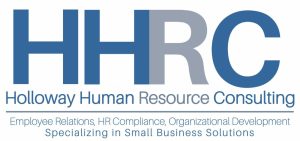Here is today’s summary of the recent COVID-19 updates to provide employers and employees with assistance as we navigate through COVID-19 and the implications for employers and employees. It is important to remember that no general rules apply to every situation or unique circumstances. If your situation does not fit neatly into the guidance or links provided below be sure to ask for assistance.
The U.S. Department of Labor Guidance
On Friday, the U.S. Department of Labor {DOL} added two new resources for employers:
- Families First Coronavirus Response Act (FFCRA): Employee Paid Leave Rights »
- Families First Coronavirus Response Act (FFCRA): Employer Paid Leave Requirements »
The DOL states that an employee qualifies for paid sick time if the employee is unable to work (or unable to telework) due to a need for leave because “the employee is caring for a child whose school or place of care is closed (or child care provider is unavailable) for reasons related to COVID-19.” The statute specifically refers to a son or daughter, and not just any child.
When paid sick leave and emergency FMLA overlap as in the childcare situation, they run concurrently (not consecutively):
All employees of covered employers are eligible for two weeks of paid sick time for specified reasons related to COVID-19. Employees employed for at least 30 days are eligible for up to an additional 10 weeks of paid family leave to care for a child under certain circumstances related to COVID-19
A full-time employee is eligible for up to 12 weeks of leave (two weeks of paid sick leave followed by up to 10 weeks of paid expanded family & medical leave) at 40 hours a week, and a part-time employee is eligible for leave for the number of hours that the employee is normally scheduled to work over that period.
How and when to get the IRS tax credits
The Internal Revenue Service provided some guidance into the tax credit plan for COVID-19 related paid leave for workers, and tax credits for small and midsize businesses. Below is what the IRS refers to as its “key takeaways”:
Complete Coverage
Employers receive 100% reimbursement for paid leave pursuant to the Act.
Health insurance costs are also included in the credit.
Employers face no payroll tax liability.
Self-employed individuals receive an equivalent credit.
Fast Funds
Reimbursement will be quick and easy to obtain.
An immediate dollar-for-dollar tax offset against payroll taxes will be provided
Where a refund is owed, the IRS will send the refund as quickly as possible.
Small Business Protection
Employers with fewer than 50 employees are eligible for an exemption from the requirements to provide leave to care for a child whose school is closed, or childcare is unavailable in cases where the viability of the business is threatened.
Easing Compliance
DOL also revealed some new information about enforcement of the law:
- The Department will observe a temporary period of non-enforcement for the first 30 days after the Act takes effect, so long as the employer has acted reasonably and in good faith to comply with the Act.
- For purposes of this non-enforcement position, “good faith” exists when violations are remedied and the employee is made whole as soon as practicable by the employer, the violations were not willful, and the Department receives a written commitment from the employer to comply with the Act in the future.
Support for Businesses with Liquidity Issues
The IRS is also supporting businesses with liquidity issues. Companies can take immediate advantage of paid leave credits by retaining and accessing funds that would otherwise be paid to the IRS in payroll taxes. Employers can get an advance from the IRS if those amounts are not enough to cover the cost of paid leave by seeking an expedited advance from the IRS by submitting a streamlined claim form the IRS expects to release this week.
The DOL expects to issue FFCRA regulations in April 2020.
You can read more details from the IRS website »
Oregon Employers
Below are some helpful links for both employers and employees that explain available Oregon programs and how to navigate through them:
- Oregon COVID-19 Related Business Layoffs, Closures, and Unemployment Insurance Benefits
- Oregon Workshare Program
- Oregon Unemployment Insurance website
- COVID-19 Related Business Layoffs, Closures, and Unemployment Insurance Benefits
I will provide regular updates as new information becomes available. As always, be sure to contact me if you have any questions about this or any other workplace issues.

